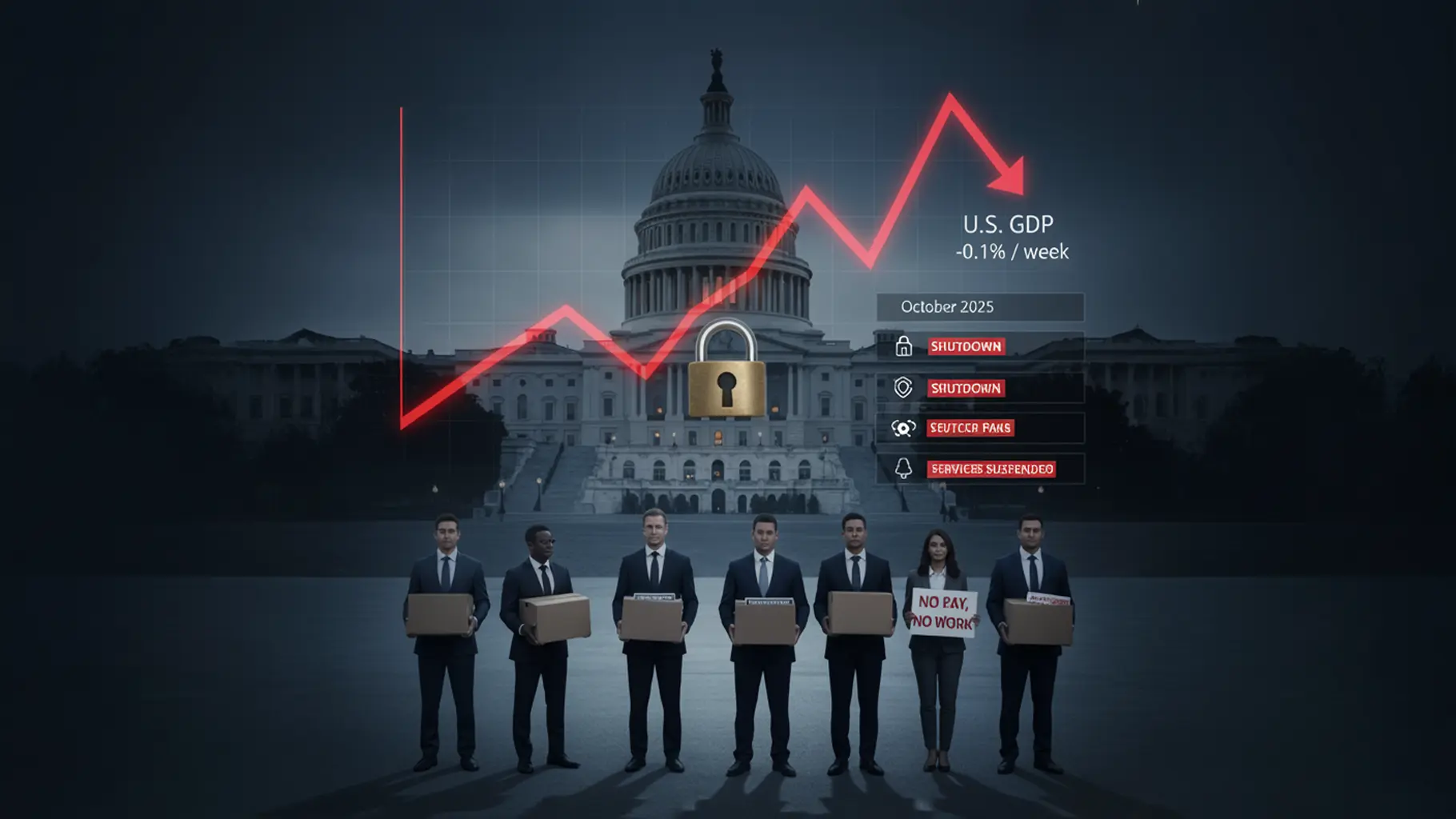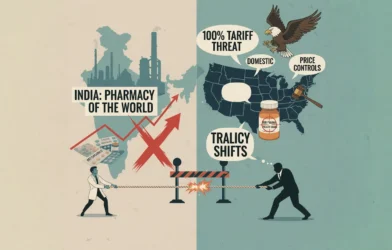Author: Dev Patel | EQMint
Washington, D.C., October 03, 2025 — The U.S. federal government officially entered a shutdown on October 1, 2025, after Congress failed to pass new spending legislation. The deadlock has resulted in furloughs, suspended services, and mounting economic concerns, exposing the severity of political gridlock in Washington and its real-world consequences.
How the Shutdown Happened
At midnight on October 1, funding for the federal government expired after lawmakers failed to agree on a continuing resolution or full-year appropriations bill. The root cause lies in partisan disagreements over spending priorities, healthcare subsidies, and foreign aid cuts.
Senate Democrats blocked a Republican-led funding measure, demanding changes to protect certain healthcare and social support programs. Meanwhile, Republicans and the White House insisted on passing a “clean” bill without additional provisions. The deadlock left no room for compromise, triggering the shutdown.
Who Is Affected
Federal Workers
-
- Roughly 800,000 federal employees are affected, either furloughed or required to work without pay.
-
- Agencies like the Department of Health and Human Services (HHS) expect nearly half of their staff to be furloughed.
-
- The Centers for Disease Control and Prevention (CDC) is preparing to furlough around two-thirds of its workforce, while the National Institutes of Health (NIH) may furlough up to three-quarters.
Government Agencies
-
- The Cybersecurity and Infrastructure Security Agency (CISA) has been forced to operate at only about one-third of its capacity, raising alarms over the nation’s cyber defenses.
-
- The Federal Trade Commission (FTC) suspended consumer protection services, halting fraud and identity theft complaint filings.
-
- Federal courts will remain open temporarily by drawing on reserve funds but warn of disruption if the shutdown continues beyond mid-October.
Public Programs
Social support programs such as the Women, Infants, and Children (WIC) nutrition initiative are facing interruptions. Grants, inspections, and non-emergency government services have been paused, with ripple effects on state and local governments that rely on federal support.
Economic Fallout
Immediate Costs
Economists estimate that the shutdown could shave at least 0.1 percentage points off GDP growth for each week it continues. That translates into billions of dollars in losses to the U.S. economy. The White House estimates weekly economic damage at between $7 billion and $15 billion.
Consumer spending is also expected to decline, as furloughed workers lose paychecks and cut back on expenses. Over a month, economists warn, the consumer spending decline could reach $30 billion.
Market Reactions
Investor confidence has been rattled. The uncertainty has delayed federal contracts, slowed procurement, and disrupted reporting of key government data. For businesses and markets, the absence of reliable economic indicators further clouds decision-making.
Political Battles Intensify
The shutdown has also become a stage for political brinksmanship.
-
- The administration froze billions in federal funds earmarked for Democratic-led states, including transit projects in New York and clean energy initiatives in California and Illinois. Critics labeled the move as political blackmail.
-
- Treasury Secretary Scott Bessent accused Democrats of “negotiating like terrorists” for refusing to compromise.
-
- President Donald Trump warned that federal employees could face firings if the shutdown persists, escalating tensions further.
Democrats countered by accusing the White House of weaponizing federal funds and jeopardizing essential services. With neither side willing to back down, the shutdown has become a symbolic fight over power and priorities in Washington.
Public Opinion and Pressure
Polls indicate that nearly two-thirds of Americans oppose government shutdowns as a political tactic. Even within party bases, frustration is mounting. Constituents are voicing concerns about suspended services, delayed paychecks, and economic risks.
State governments and business groups have also begun applying pressure, warning of cascading effects if the shutdown continues. Airlines, defense contractors, and small businesses dependent on federal contracts have already reported disruptions.
What Comes Next
Congress must agree on a short-term continuing resolution or pass full appropriations to reopen the government. Negotiations are ongoing, but with both parties entrenched in their positions, a breakthrough remains uncertain.
If the shutdown extends for weeks, the economic and social consequences will intensify. Delays in public health programs, food safety inspections, and cybersecurity monitoring could pose significant risks. Meanwhile, the morale of federal workers—many already struggling with financial insecurity—is expected to deteriorate.
Conclusion
The 2025 U.S. government shutdown is a stark reminder of how political dysfunction directly affects everyday Americans. It has disrupted federal services, imposed heavy costs on the economy, and deepened public frustration with Washington.
The coming days will determine whether compromise can be reached to restore government operations. Until then, the shutdown stands as a cautionary tale of how partisan battles can undermine governance, stability, and trust in America’s institutions.
References
- Washington Post – Welcome to the shutdown
- Associated Press – Democrats vote down federal funding bill, putting government on path to shutdown
- The Guardian – Government shutdown could cost US economy billions of dollars a week, analysts say
- Reuters – White House freezes funds for Democratic states in shutdown slap
Disclaimer: This article is based on information available from public sources. It has not been reported by EQMint journalists. EQMint has compiled and presented the content for informational purposes only and does not guarantee its accuracy or completeness. Readers are advised to verify details independently before relying on them.







